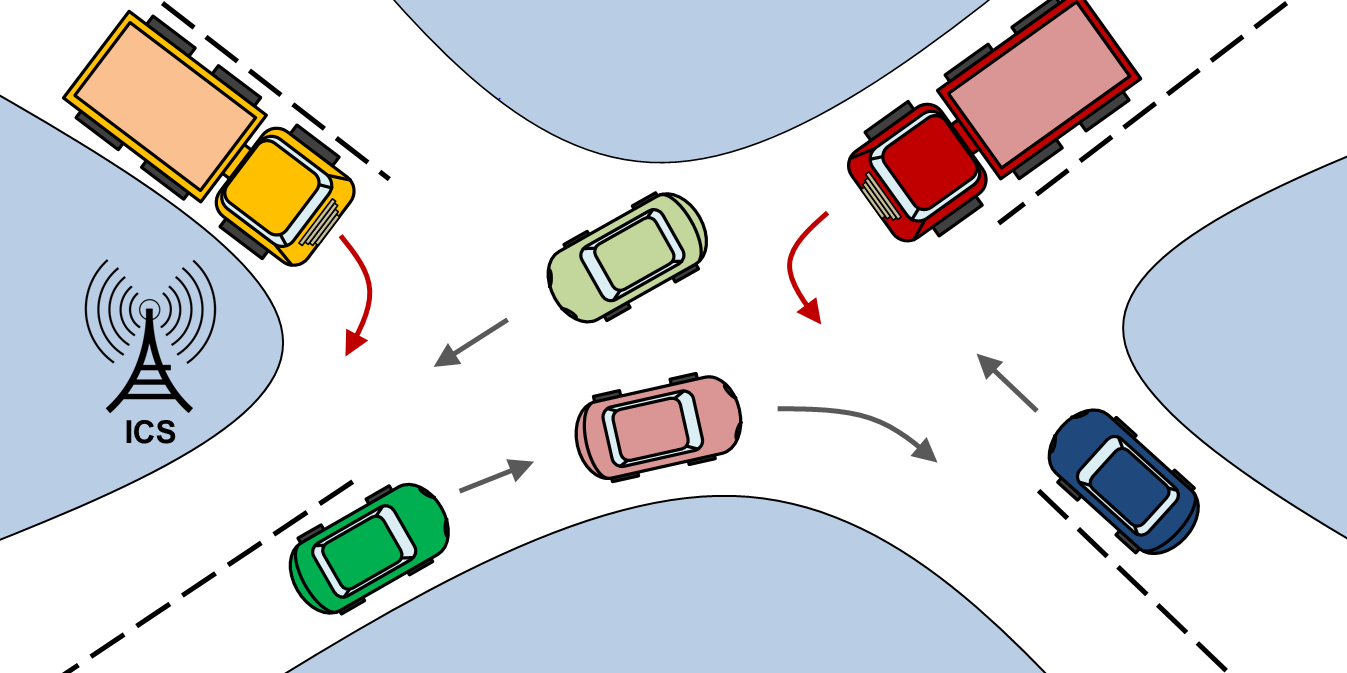Stochastic Models for Open-Ended CPS
In general, deterministic methods do not seem adequate for the design and analysis of open-ended CPS. Since the concept of open-ended CPS implies certain randomness - components join and leave the system at arbitrary points in time - it seems more natural to use stochastic models instead. Stochastic models then facilitate statistical and probabilistic techniques for timing/reliability analysis and validation. The focus in this project is on developing stochastic models for system-level design and analysis of open-ended CPS which allows for probabilistic guarantees of meeting pre-specified requirements concerning, in particular, timing and reliability. This is done at the example of an intelligent crossroad.
Intelligent crossroads aim to substitute conventional traffic lights by coordinating the order in which vehicles cross an intersection. Since vehicles come and go at arbitrary points in time, this results in an open-ended setting that is difficult to analyze with deterministic methods. For example, deterministic methods fail to provide meaningful estimates for the maximum number of vehicles at the intersection, which is paramount to assess communication reliability and, in the end, guarantee safety. Similar problems arise concerning communication and computation performance. In contrast, statistical and probabilistic techniques are more suitable for this purpose and constitute the focus of this work.
|
|






